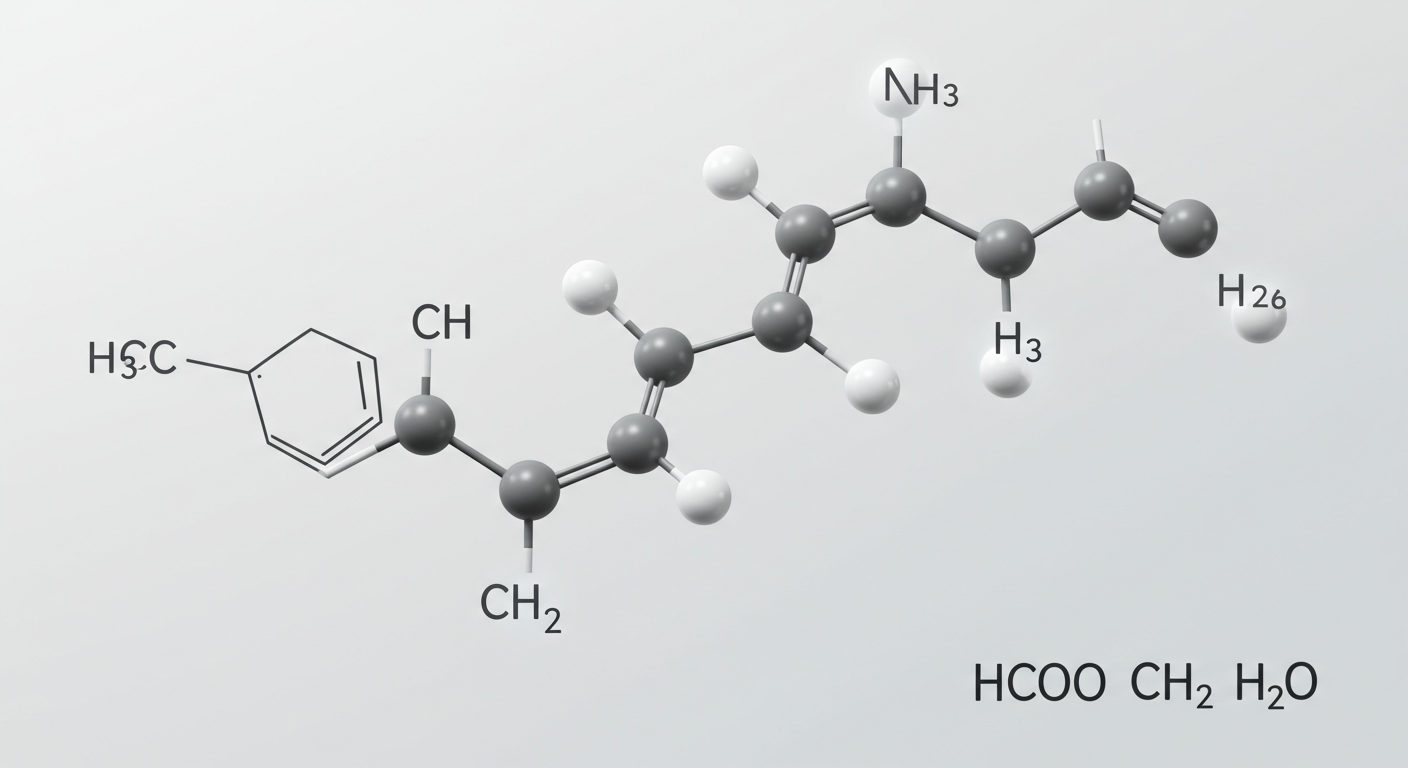The world of chemistry is filled with fascinating compounds and their intricate behaviours. One such compound that has garnered attention in scientific circles is HCOOCH₂CH₂H₂O. This unique structure, which beautifully combines formate and water molecules, opens the door to a myriad of interactions and applications. Whether you’re a seasoned chemist or simply curious about chemical reactions around us, understanding HCOOCH CH₂ H₂O can reveal essential insights into its properties and behaviour in various environments.
As we dive deeper into this intriguing substance, we’ll explore how it interacts with water—our planet’s lifeblood—and uncover some surprising effects it may have on our everyday lives. From practical uses to common misconceptions, there’s much to discover about this compound, which plays a crucial role in both nature and science. So let’s embark on this journey through molecular structures and chemical dynamics!
Structure and Chemical Behaviour of HCOOCH CH₂ H₂O
HCOOCH₂CH₂H₂O, also known as formate methanol hydrate, boasts a unique structure that captivates chemists. This compound, formed from the fusion of formic acid and methanol with water, is distinguished by the presence of both carbon and oxygen atoms in its molecular formula, contributing to its exceptional chemical properties.
At the core of its structure lies the formate (HCOO-) group, which plays an essential role in hydrogen bonding interactions. This arrangement allows HCOOCH CH₂ H₂O to exhibit versatile behaviour under various conditions.
When exposed to water, this compound undergoes dynamic exchanges between molecules, influencing its solubility and reactivity in solutions. Its polar nature enhances these interactions further, making it particularly interesting for studying reaction mechanisms.
The chemical behaviour of HCOOCH CH₂ H₂O often reflects that of similar compounds but with some fascinating twists due to structural nuances. For instance, variations in temperature or pressure can significantly affect how it interacts with surrounding molecules.
Researchers are constantly exploring these dynamics to unlock potential applications ranging from pharmaceuticals to environmental science. Understanding this unique molecule opens up new avenues for innovation across multiple fields.
You Might Also Like: Pro Show Enthusiasts
Understanding the Basics of HCOOCH CH₂ H₂O
HCOOCH CH₂ H₂O represents a fascinating compound with unique characteristics. At its core, this chemical formula showcases the relationship between formic acid and methanol in the presence of water. Understanding these components is essential for grasping how they interact.
The first part, HCOOCH, indicates the ester formed from the reaction of formic acid and methanol. This structure provides insights into its reactivity and potential applications. The inclusion of CH₂ adds to the complexity by introducing additional carbon atoms that can influence properties such as solubility.
When we add H₂O into the mix, we introduce a crucial element that significantly alters behaviour. Water acts as both a solvent and reactant in many chemical processes involving HCOOCH CH₂. Its polar nature allows it to interact effectively with other molecules.
This interaction yields interesting dynamics that warrant further exploration. Understanding how water impacts HCOOCH CH₂ helps us appreciate various applications across different fields like pharmaceuticals or environmental science.
Delving deeper into these basics reveals numerous opportunities for research and practical applications related to the chemistry of this intriguing compound.
Properties of Water and its Interaction
Water is a unique substance, possessing remarkable properties that allow it to interact with various compounds. Its polarity and hydrogen bonding capabilities make water an excellent solvent. This characteristic plays a crucial role in the behaviour of HCOOCH CH₂ H₂O.
HCOOCH, also known as formylmethanol, exhibits interesting interactions when mixed with water. The hydroxyl group (-OH) present in its structure can form hydrogen bonds with water molecules, thereby enhancing solubility. This interaction is crucial for many chemical processes that involve these substances.
The presence of H2O affects the stability of HCOOCH CH₂ by altering its conformation and reactivity. When dissolved in water, this compound may undergo hydrolysis or other transformations due to increased molecular collisions and energy transfer within the solution.
Temperature also influences how HCOOCH interacts with water. Increased temperatures can enhance solubility but may also lead to faster reaction rates; this balance is essential for practical applications involving this compound in aqueous solutions.
Understanding these dynamics opens doors to exploring numerous fields like pharmaceuticals and environmental science, where HCOOCH CH₂’s potential benefits emerge through its interaction with water.
Effects of HCOOCH CH₂ H₂O on Water
HCOOCH CH₂ H₂O, or formyl methanol, exhibits intriguing interactions when mixed with water. Its molecular structure allows it to engage with water molecules in unique ways. This interaction can influence the physical and chemical properties of both substances.
When HCOOCH CH₂ H₂O is added to water, it alters the hydrogen bonding network. The presence of this compound introduces additional polar groups that can enhance solubility for various solutes. As a result, it may facilitate reactions typically limited by low solubility in pure water.
This modification also impacts the viscosity of the solution. With an increase in viscosity comes changes in diffusion rates for particles within the mixture. Such alterations may be significant for processes that require precise control over reaction kinetics.
Furthermore, HCOOCH CH₂ H₂O contributes to changes in pH levels due to its acidic components. These shifts can affect biological and chemical systems reliant on stable pH conditions.
The overall effect on surface tension is another notable aspect. By reducing surface tension, these interactions enable better wetting properties, which could benefit applications such as detergents and emulsifiers used across industries.
Applications and Uses of HCOOCH CH₂ H₂O and Water Interaction
HCOOCH₂CH₂H₂O has a fascinating range of applications, particularly in the realms of chemistry and environmental science. Its unique structure allows it to engage effectively with various substrates, making it valuable in organic synthesis. This compound often serves as an essential reagent or solvent due to its favourable solubility properties.
In the agricultural sector, HCOOCH CH₂ H₂O is gaining attention for its role in enhancing pesticide formulations. By improving the distribution and efficacy of active ingredients, this compound can lead to more sustainable farming practices while reducing chemical runoff into water sources.
Furthermore, researchers are exploring its potential as an eco-friendly surfactant. When combined with water, it exhibits excellent emulsifying properties that can be beneficial in personal care products and household cleaners. These applications demonstrate how HCOOCH CH₂ H₂O can contribute positively to both consumer goods and environmental health.
Its interaction with water also opens avenues for innovative wastewater treatment solutions. The ability of this compound to interact favourably with pollutants suggests new methods for purifying contaminated water while minimizing chemical usage.
Ongoing research explores biomedical applications, including drug delivery systems. The compatibility between HCOOCH CH₂ H₂O and biological materials may pave the way for advanced therapeutic applications that enhance patient outcomes.
You Might Also Like: Pro Show Enthusiasts
Common Misconceptions about HCOOCH CH₂ H₂O and Water Interaction
Many people misunderstand the nature of HCOOCH CH₂ H₂O and its interaction with water. One common misconception is that it behaves like a simple organic compound when, in fact, its structure reveals more complexity. The presence of multiple functional groups means that its properties can differ significantly from those of traditional alcohols or esters.
Another myth is that the molecule does not interact well with water. Some assume these compounds are hydrophobic due to their carbon content. However, HCOOCH CH₂ H₂O shows notable affinity for water molecules because of hydrogen bonding capabilities within its structure.
It’s often believed that all reactions involving this compound will lead to predictable outcomes in aqueous environments. Yet, various factors—such as temperature and concentration—can influence its behaviour in solution, making predictions challenging at times.
Additionally, many overlook the potential roles this compound can play in biological systems. While some might consider it merely a laboratory curiosity, research suggests that it has significant interactions with enzymes and other biomolecules that could impact metabolic pathways.
There’s confusion about practical applications stemming from these misconceptions. Misunderstanding the chemical behaviour limits innovation, where HCOOCH CH₂ H₂O might offer solutions across several fields, including pharmaceuticals and environmental science.
Future Directions
The exploration of HCOOCH CH₂ H₂O presents numerous avenues for future research. Scientists are increasingly interested in the molecular interactions and potential applications of this compound. Understanding how it behaves in various environments can lead to innovations across multiple fields.
Research efforts may focus on synthesizing derivatives or exploring their role in biological systems. The interaction between HCOOCH CH₂ H₂O and other substances, particularly water, opens new doors for studying solvent effects in chemical reactions. Additionally, advancements in analytical techniques could provide deeper insights into its structural properties.
Exploring the potential uses of HCOOCH CH₂ H₂O extends beyond traditional applications. Its unique chemical behavior might unveil opportunities in materials science, pharmaceuticals, or environmental chemistry. Investigating these possibilities could yield significant benefits for industries reliant on efficient reaction pathways or novel compounds.
As researchers delve deeper into this area, collaboration between chemists and biochemists will be essential. By integrating knowledge from different disciplines, a more comprehensive understanding of HCOOCH CH₂ H₂O can emerge. This multidisciplinary approach not only enhances scientific inquiry but also encourages innovation that might revolutionize our understanding of similar compounds.
With ongoing studies and explorations on the horizon, the future looks promising for uncovering the mysteries surrounding HCOOCH CH₂ H₂O and its interaction with water.

